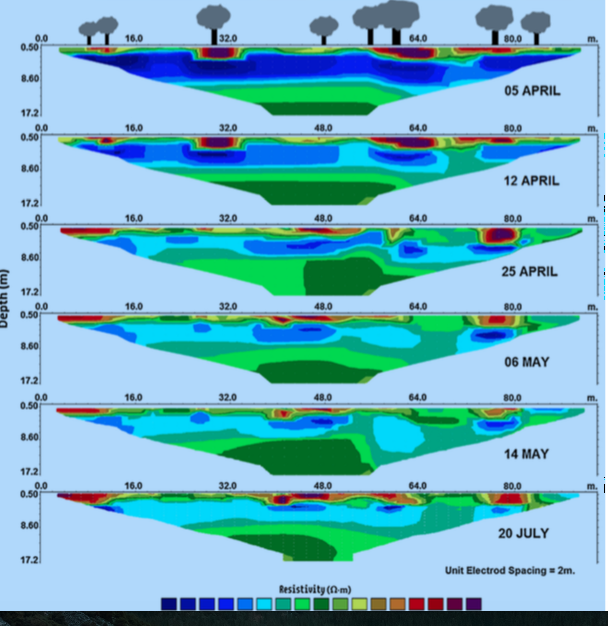
Ain-Lhout, F
Boutaleb, S
Díaz-Barradas, MC
Jauregui-Arana, J
Zunzunegui, M
Agricultutral Water Management
Year: 2016
Volume: 164
Inicial page: 158
Final page: 166
ISI: 2.603
Abstract
Argania spinosa is an endemic tree of Southwestern Morocco. It grows in arid regions, where annual rainfall ranges between 100 and 300 mm and where no other tree species can live. The aim of the study was to investigate, the root system architecture of Argania spinosa and the temporal dynamics of the root-zone moisture after a rain event, using a geophysical technique called Electrical Resistivity Imaging (ERI). This technique discriminates by its different resistivity, woody roots, dry soil and moist soil. We tested the ability of three different ERI profile configurations (Dipole-dipole, Wenner and Wenner–Schlumberger) to measure a correct two-dimensional profile. Six measurements (from April to July) of resistivity sections were performed along a 96 m linear transect that included eight trees. Midday shoot water potential (Ψmd) and leaf relative water content (RWC) were measured during the experimental period, for the eight trees. The results showed that the Wenner configuration was the most appropriate discriminating resistivities of soil, soil moisture and roots. The 2D resistivity pseudo-sections obtained showed three different layers: one thin resistive layer interspersed by very resistant spots corresponding to woody roots, followed by a middle conductive one corresponding to moist soil, and a deeper layer with moderate resistivities. Moisture content changed substantially over time; being lower over summer than in spring. ERI profiles showed that the resistive layer corresponding to the argan roots, was located between 0 and 4 m of depth. The analysis of the 2D resistivity pseudosections revealed significant differences in soil moisture distribution; so that in the zone under argan roots, soil moisture could be measured down to 6 m deep throughout the whole study period, whereas in the zone outside argan roots, moisture was depleted as early as May down the whole profile.
As expected, Ψmd, showed minimal values in summer, dropping to −3.3 MPa at the end of the experiment. RWC exhibited a similar pattern. Based on the ERI measuring we conclude that argan roots were not exploiting deep water from the aquifer; instead, they are using soil water at few meters deep.



